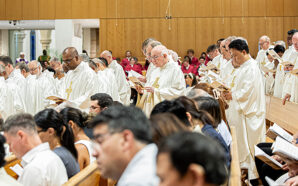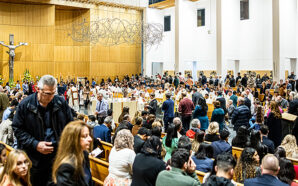Almost everything we think we know about her is speculation. Except, we do know her name.
Magdala was a fishing village about 10 miles south of Capernaum, where Jesus stayed for a while after leaving Nazareth. Many scholars believe her name refers to this village as being her home. While it was common to say a name with the “of” between the name and the place – Jesus of Nazareth, Simon of Cyrene – it was not essential.
But there’s more. Migdal (Hebrew) is a word that refers to a tower or enclosure to hold fish under water. It was also used to refer to a tower in a vineyard or shepherd’s field for spotting danger. Both usages stress the notion of holding together and strength.
It was Gregory I (the Great) who stated that Mary Magdalene was a prostitute. It was the fact that she was a woman that her sin was almost always seen as one of sexual impropriety. This may come from the encounter written in Luke 8 where the Pharisee, Simon, invites Jesus to his house and an unnamed woman of dubious repute anoints his feet.
The assumptions are firstly that the sin is sexual and, secondly, that this woman is Mary Magdalene, even though Luke does not name her.
However, we do know that Jesus liked word plays and giving his followers new names; nicknames, if you like. Simon became Cephas/Petros, the “rock”, we know him as Peter; James and John became known as the “Sons of Thunder”; Thomas is called “the twin”. Magdalene meaning “strong tower” might be Jesus’ way of esteeming her by suggesting that “here is a disciple that can hold all of us together”.
But, how has John understood Mary Magdalene in the Resurrection text of his Gospel (Jn 20:1-18)?
Clearly, there are two stories combined in this Resurrection appearance. The first is about Mary Magdalene at the tomb; the second introduces Peter and the other, unnamed disciple. We will hold our focus on Mary Magdalene.
John gives her name and her appellation Magdalene – the strong enclosure that holds the fish, the tower whose strength brought her all the way through to this moment. Jesus calls her “woman” – the same word that is used for the companion/partner of the man in Genesis 2 and also by Jesus of his mother at the Cana wedding in John 2.
John says she mistakes the risen Jesus for the gardener, echoing that original garden for which the man and the woman were to care (Gen:1 and 2). Lastly, John gives us Jesus using the same words that he used at the beginning of his ministry when the first disciples began following him – “who are you looking for?” – thereby indicating that she is a disciple on equal terms to the men.
Jesus then calls her by name: “Mary”. The Gospel writer gives us two possible hints of the depth of their relationship when John has her asking for the body to carry it away and again when she call Jesus “Rabbouni”. It is most often family that asks to have the body and “Rabbouni” is a word used only by the closest students or the family of the rabbi.
John then gives us Jesus’ words about not holding onto the past, to what was, but to know that “I am ascending”. Note the present tense, as though he is in process of returning to the Father, and Mary is now part of that process, too. Jesus directly tells her to inform the others and the writer then gives us her full name again, strengthening the understanding that she is the tower that holds the others by what she has experienced.
Mary Magdalene shows us what staying with Jesus means. It is about her dedicated “presence”, which allows her, in the end, to experience – to see – Jesus resurrected, thus becoming the “Bride of Christ”, a term the Church uses to represent our relationship to Christ.
Mary Magdalene is one of our best examples of how to live this out. Mary Magdalene becomes the voice of those in urban life who are caught in the myriad of troubles that life gives, urging them to find rest and new strength in Jesus. By holding Jesus and the other disciples as she did, Mary becomes the Apostle to the Apostles.
As we all journey to the Plenary Council, it is important that women continue to maintain an active presence as did Mary Magdalene – holding the precious truths of our faith secure and all the while spreading the Good News of Jesus risen and glorified.
Dr Debra Snoddy is a Lecturer in Biblical Studies at the Catholic Institute of Sydney.
With thanks to Plenary Council 2020.








